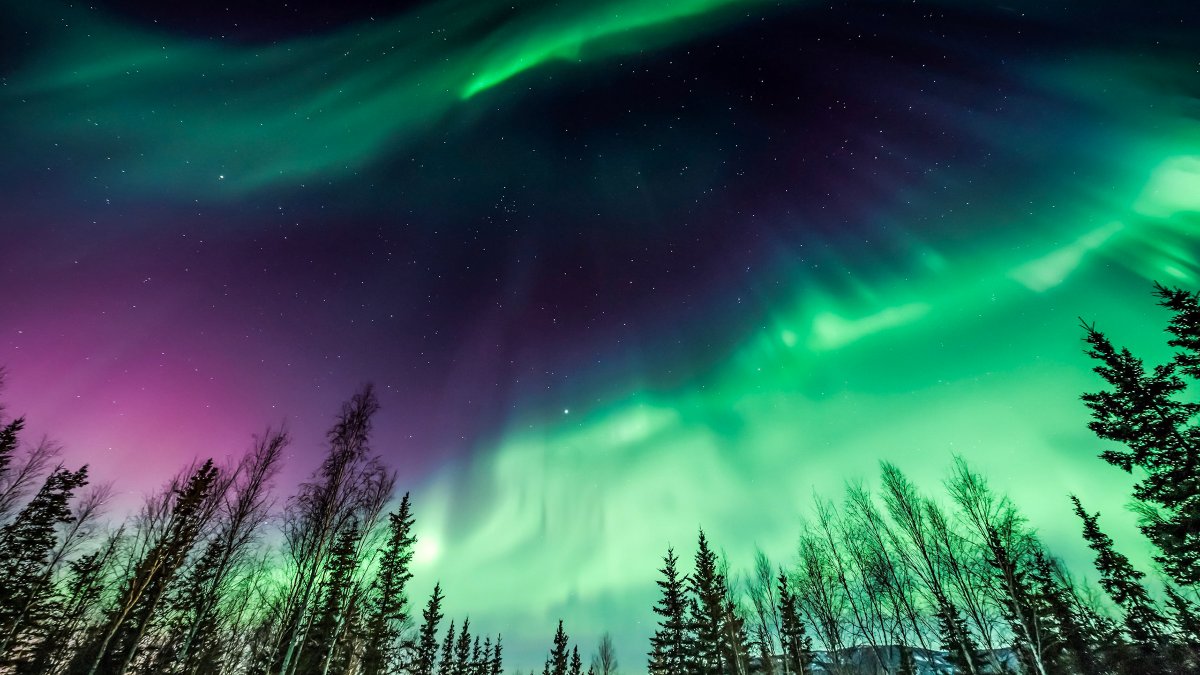he two greatest barriers to seeing the northern lights have always been price and timing. Starting today, Alaska Airlines’ latest fare sale may have the solution to both of those challenges.
From January 13 to 17, the airline will offer a 20 percent discount on flights to Anchorage and Fairbanks, Alaska, from all cities in the continental U.S. The percentage, generated through a partnership with the University of Alaska Fairbanks Geophysical Institute, was based off of the highest reading of northern lights’s visibility from a 27-day forecast performed this morning. The discount will apply to travel through February 12.
“We’re hoping that this can be the motivation for someone who has had the northern lights on their bucket list for a long time to actually get out there and see them,” said Natalie Bowman, managing director of marketing and advertising for Alaska Airlines.
According to Mark Conde, a physics professor at the University of Alaska Fairbanks, the best time to see the lights during the promotional dates are from January 14 through 20 and February 2 through 7, due to the fact that there will be more activity in the earth’s magnetic field. Often referred to as Aurora Borealis and characterized by mesmerizing green, blue, and purple hues, the lights are caused by charged particles hitting the Earth’s upper atmosphere. This creates small disturbances in the earth’s magnetic field, which correlate with the strength of the lights and can be measured on the Kp Index, a geomagnetic forecasting system. The index operates on a scale from 0 to 9, with 9 being the greatest level of activity in the magnetic field—typically leading to the highest chance of seeing the northern lights.
The 20 percent discount means that the highest forecast showed a 4 to 5 Kp reading. The airline used the following system in determining the figure: a 15 percent discount if the forecast showed 0 to 3 Kp, a 25 percent discount at 6 to 7 Kp, and a 35 percent discount at 8 to 9 Kp.
Conde says the forecasting system is fairly accurate, though he reminds travelers that there is always uncertainty when predicting future atmospheric patterns. “I think Fairbanks is a much better choice if you want to see the Aurora,” he says, suggesting fliers consider it over Anchorage. “When the Aurora is inactive, it retreats to the north. So places like Fairbanks and even further north up the coast of Alaska are where you want to be when the Aurora is really quiet.” Fairbanks is also far from big cities and light pollution, making it an ideal place to see the lights.
Conde says the hours between 11 p.m. and 2 a.m. are the best times to see the lights, though there is a chance of seeing them on a clear night between the hours of 5 p.m. and 7 a.m. He also recommends spending at least three to four days in Anchorage or Fairbanks to ensure a good chance of a sighting.
For those who make it to Alaska, Conde recommends heading to Cleary Summit or the Chena Hot Springs in Fairbanks for the best view of the lights. Visitors can rent a car or join a group like the Aurora Chasers in Fairbanks or Greatland Adventures in Anchorage. There are plenty of affordable places to stay in town, but for those who want to stay where the magic is more likely to happen, the Borealis Basecamp (from $369), an hour north of Fairbanks, has geodesic domes with 16-foot windows that curve across each roof, while 40 miles outside Anchorage, the remote Alyeska Resort (from $130) has staff that provide wake-up calls when the lights are visible. Planning ahead and dressing warm is a must, Conde adds, as observers could be waiting two or three hours before catching a glimpse. “We’ve been helping people chase the northern lights for more than 25 years by tracking and posting aurora forecasts online,” Conde said. “The Geophysical Institute team is thrilled to see our data come to life.”
Source : outsideonline.com
